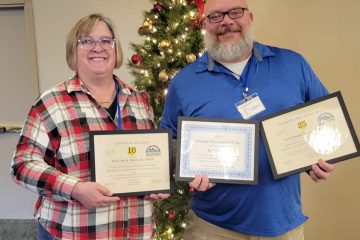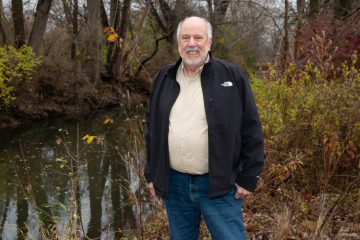Dr. Michael Woods, executive director of the Association of Illinois Soil & Water Conservation Districts, shares a letter written to the Illinois Times regarding the March 28, 2024 story by David Blanchette on last month’s Illinois Grazing Lands Coalition’s Inaugural Grazing Conference, Grass is good for land, livestock and livelihoods.
“When you’re unaware of another way, you often have this reservation about change. It begins with the transformation of the mind before we can transform our practices.”
Allen Williams, a founding partner of Understanding Ag
Dear Editor,
David Blanchette’s March 28 showcase that “Grass is good for land, livestock and livelihoods” addresses the realization that agricultural conservation is dearly needed across the state. At heart, the article showcased that this is a social phenomenon more than a scientific challenge.
Threats to our state’s land and waterways are influenced by a wide range of political, economic, and cultural factors. But in the end the conservation of our soil and water is conceived and carried out by people (producers and landowners).
As Mr. Blanchette and his featured producers defined, the conservation of our natural and working lands is a manifestation of human beliefs and values. Choices over production practices and long-standing habits, how to prioritize returns on investments, and how to advance them are inherently social. With consequences downstream, not just locally; and for farmers’ livelihoods and human lives, both rural and urban.
Mr. Crum, the farmer, and rancher from Cass County declared “You can’t implement what you do not know. Once you are aware and have a clear understanding of how to do this, you’re going to do it.” Since 1941, producers across the state have been continually engaged by their local Soil and Water Conservation Districts on the importance of conservation practices and even offered cost-share assistance. Yet, we continue to witness producers and landowners across the state failing to head the guidance, education, and most of all call to action.
While billions of dollars are being invested in protecting our waterways and rebuilding our soil, we continue to find that field-level efforts are not advancing at the pace needed to address the Illinois Nutrient Loss Reduction Strategy. And part of the reason is ignoring the root cause of limited progress—people.
When we talk about conserving agricultural lands and waterways, we should really be talking about changing the way people neglect to heed the call to action and implement proven conservation practices, like cover crops, reduced tillage, and regenerative livestock production.
Agricultural conservation ultimately is a social process rooted in peoples’ choices. These have consequences not only for soil health and water quality, but also for producer/landowner livelihoods. We need to better understand these consequences and the barriers to producer implementation if we’re going to truly advance solutions that are effective, lasting, and equitable.
To this end, we need to see increased political leadership to elevate state investments into our 97 Soil and Water Conservation Districts, primed to work with producers and landowners to implement the needed conservation practices to ensure that our water runs clean, and our soil remains healthy.
Dr. Michael Woods
Association of Illinois Soil & Water Conservation Districts


